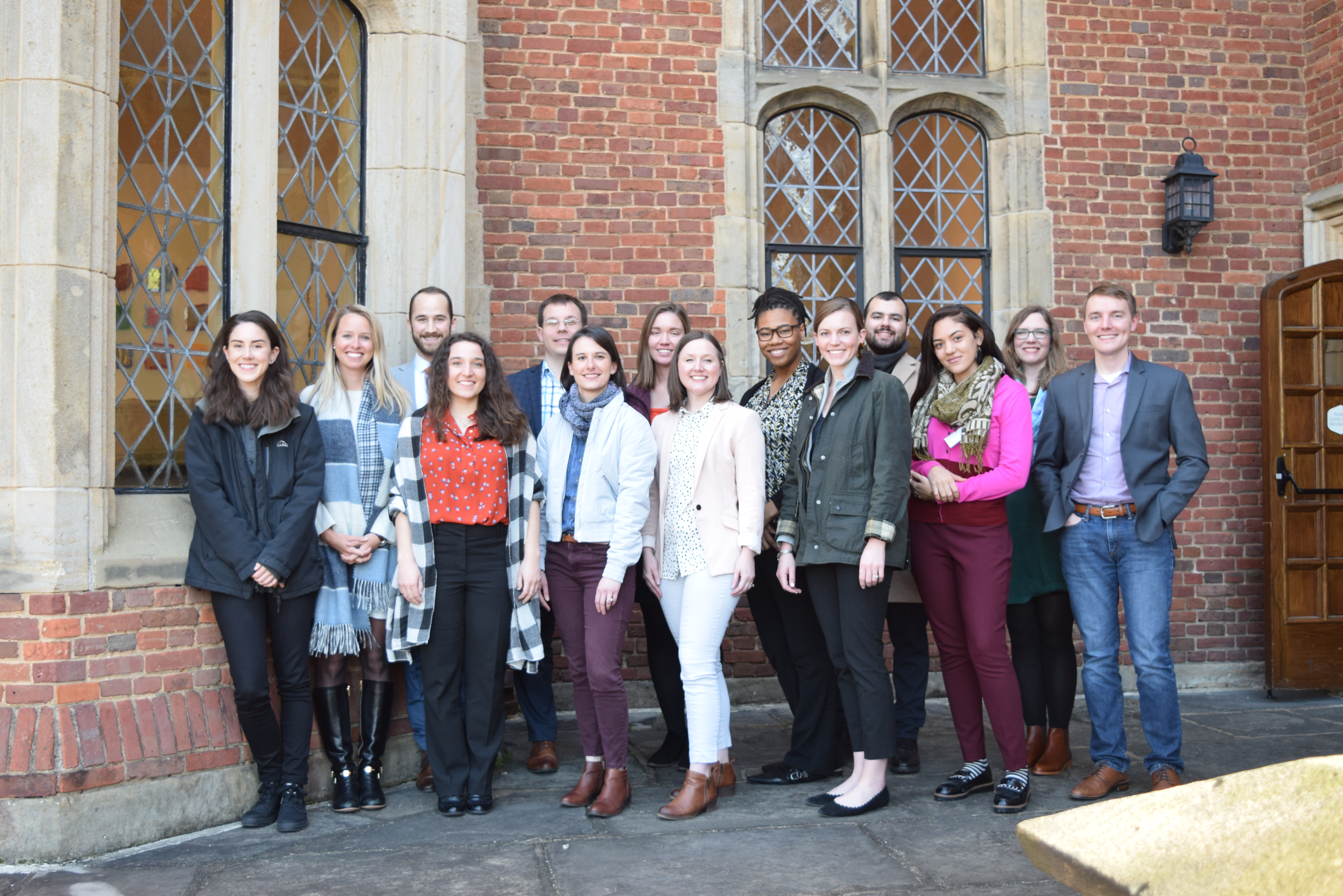
The Emerging Leaders in Architecture: An Honors Academy of AIA Virginia is completing their eleventh year in 2019. Architecture students, candidates for licensure, and recently licensed architects apply for the program in November of each year and are selected to participate based on chapter and university nominations and open applications. Beginning in January, the class gathers once per month for a series of topic-based seminars to expand the horizons of their experience. Each meeting rotates around the state chapters, introducing participants to new places, new firms, and new peers. Aside from that, the class is tasked with a group project, and present the results of their work at the Architecture Exchange East Conference in November.
We are a diverse class of sixteen architects, designers, and students from all over the world and working in the state’s top firms and schools in Virginia. Though we are only a few months into the year, we’ve already had loads of fun and gotten to know each other quite well. At our first session in Richmond in January, we each gave three minute long Pecha Kucha style presentations to introduce ourselves to the group, got familiar with the program and visited a project site. For our project kick-off in February, we met at AECOM’s offices in Arlington. Following our day of seminars, we spent the night at an Annandale AirBnB mansion-ette, which featured a baby grand piano and a hot tub. It was there that we learned of Ojima’s musical talent, Ryan’s trivia brilliance, and we discovered that Jeff is our group “Dad.” Everyone also got the chance to learn more about each other on a personal level and get comfortable as a group, be more personal and get comfortable with each other which we all really enjoyed. In our March session, held at the offices of DBI Architects in Reston, we dug even deeper with a Strengthsfinder test. We learned how valuable it is to have strengths balanced in the four main categories like Zakiya and Ianta (something that is a rare trait). They give credit to their Virgo qualities. We then practiced our teamwork and strengths dynamics in a fierce spaghetti tower competition. (See our Facebook page for pics!)
This year, our team has been asked to tackle a broad question, “What should we do with unused office space in Northern Virginia?” NOVA has about 172 million square feet of office space and about 20% of that space is currently vacant. In presentations given by local developers, planners, and politicians, we learned that two primary disruptors contributed to the rise of vacancy beginning in 2008: the BRAC commission, which called for some government functions in leased space to be relocated to bases, and secondly the release of the iPhone. The iPhone brought with it a major shift in the way work happens. People are no longer tethered to physical places where information is stored; many can now conduct their business from anywhere. As a result, more employees work from home and companies require less square footage per person to operate. Currently, developers look to the bottom line to decide which obsolete office buildings are candidates for upgrades. Tenants have come to expect amenities such as exercise facilities and cafeterias from newly constructed office space. Proximity to parking, public transit, and shopping also help developers predict which buildings have investment potential which is a challenge for the unused spaces farther from civilization.
Currently, we are wading through a sea of research available on this big topic. We are studying the evolution of office space typologies and adaptive reuse case studies across the world, mapping vacancies, and seeking input from the next generation of building end users – children! We are working on reframing the question. Beyond the bottom line, we are interested in how these buildings could contribute something more to both the community and the environment in which they reside.
In the coming weeks, we will be moving from the research phase into more defined parameters for our final project. We will be tackling questions like: what is the scale of our solution, will policy-making play a role, what are everyone’s individual goals for a solution, and finally, how are we celebrating at the end of this thing?
For updates on our progress please visit our Instagram @elaclassof2019 and spread the word!
